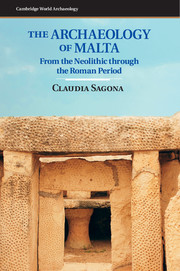Book contents
- The Archaeology of Malta
- Cambridge World Archaeology
- The Archaeology of Malta
- Copyright page
- Dedication
- Contents
- Illustrations
- Tables
- Boxes
- Preface
- Glossary
- Chapter 1 Malta’s Archaeological Past
- Chapter 2 The First Settlers and Farmers
- Chapter 3 The Culture of the Megalith Builders
- Chapter 4 Pushing Boundaries at the End of the Megalithic Building Period
- Chapter 5 New Directions
- Chapter 6 East Meets West
- Chapter 7 Melita and Gaulos during the Punic Period
- Chapter 8 Malta’s Place in the Roman World
- Closing Remarks
- Book part
- Notes
- Bibliography
- Index
- References
Bibliography
Published online by Cambridge University Press: 05 September 2015
- The Archaeology of Malta
- Cambridge World Archaeology
- The Archaeology of Malta
- Copyright page
- Dedication
- Contents
- Illustrations
- Tables
- Boxes
- Preface
- Glossary
- Chapter 1 Malta’s Archaeological Past
- Chapter 2 The First Settlers and Farmers
- Chapter 3 The Culture of the Megalith Builders
- Chapter 4 Pushing Boundaries at the End of the Megalithic Building Period
- Chapter 5 New Directions
- Chapter 6 East Meets West
- Chapter 7 Melita and Gaulos during the Punic Period
- Chapter 8 Malta’s Place in the Roman World
- Closing Remarks
- Book part
- Notes
- Bibliography
- Index
- References
- Type
- Chapter
- Information
- The Archaeology of MaltaFrom the Neolithic through the Roman Period, pp. 397 - 440Publisher: Cambridge University PressPrint publication year: 2015



